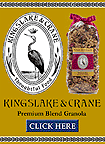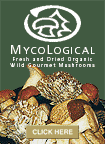Alien threat to truffle delicacy
|
The
volume of truffles harvested has diminished greatly |
One
of the world's most prized culinary delicacies,
the famous Perigord black truffle, could soon be off the menu.
By Matt Walker
BBC
Scientists
fear it will be wiped out by an invading Chinese truffle they
have discovered growing in European soils.
They tell the New Phytologist
journal that the incomer is a particularlyaggressive and fast-growing
species.
The
Perigord black truffle is one of the most highly regarded truffles,
fetching around 600 to 800 euros per kg this season.
We
dreaded it and it has happened |
Claude
Murat,
University of Torino |
"It
is the most famous and appreciated among the black truffles,
and is the most important truffle in French cuisine," says
Claude Murat, a fungus expert based at the University of Torino,
Italy.
Only Piedmont white truffles
fetch higher prices.
Yet, its very existence
is now threatened by the Chinese black truffle, a close relative
that looks similar, but has almost no taste at all.
A team led by Murat has
discovered this alien species growing on a plantation in Italy,
meaning it is now growing in the wild in Europe.
"We dreaded it and
it has happened," the scientists warn in their research
paper. The concern is that the Chinese invader will out-compete
its revered European relative.
Worse, it may even be able to interbreed with the Perigord black
truffle, potentially replacing it altogether with a hybrid.
'Ecological
rival'
True truffles are fungi that belong to the genus Tuber, and
they live symbiotically with the roots of host trees. Perigord
black and Piedmont white truffles not only have exquisite colour,
taste and odour, but are considered to be powerful aphrodisiacs.
|
"Black
gold": Truffles fetch high prices at market |
Over
the past century, harvests of the Perigord, scientifically known
as Tuber melanosporum, have declined greatly, with annual sales
falling from over 1,500 tonnes in 1870 to less than 100 tonnes
today.
This has created a gap in
the market, which since the mid-1990s has increasingly been
filled by sales of the inferior Chinese black truffle, known
as Tuber indicum.
European connoisseurs are
concerned because while imports of the Chinese black truffle
are sometimes legitimately labelled as T. indicum, often they
are not, with Chinese truffles being illegally passed off as
Perigords.
Now it seems that the two
truffles will become ecological, as well as commercial, competitors.
"The owner of the Italian
plantation contacted us in 2006," says Murat.
Genetic
avenue
He had planted hazel and hornbeam tree seedlings that he thought
were inoculated with the Perigord truffle fungus, "but
after 10 years hadn't harvested a truffle".
A survey by Murat's team
revealed both Perigord and Chinese truffles in the root tips
of the plants, and also in the soil.
"It's the first evidence
that T. indicum has been used to inoculate seedlings implanted
in Europe, and that this species can spread in European ecosystems,"
he says.
The future of the Perigord
black truffle was already in danger as a result of falling harvests.
While the team cannot yet be sure that the Chinese black truffle
will supplant the Perigord in the wild, "it certainly represents
a future danger", says Murat.
Lab tests show it grows
faster, has a higher genetic diversity and can respond better
to different ecosystems and to climate change. And when a root
is inoculated with both species, the Chinese black truffle is
able to replace its rival.
In a bid to avoid that,
Murat's team is now studying the genome of the Perigord black
truffle.
"We hope this important
project will allow us to preserve this delicious product,"
he says.



















